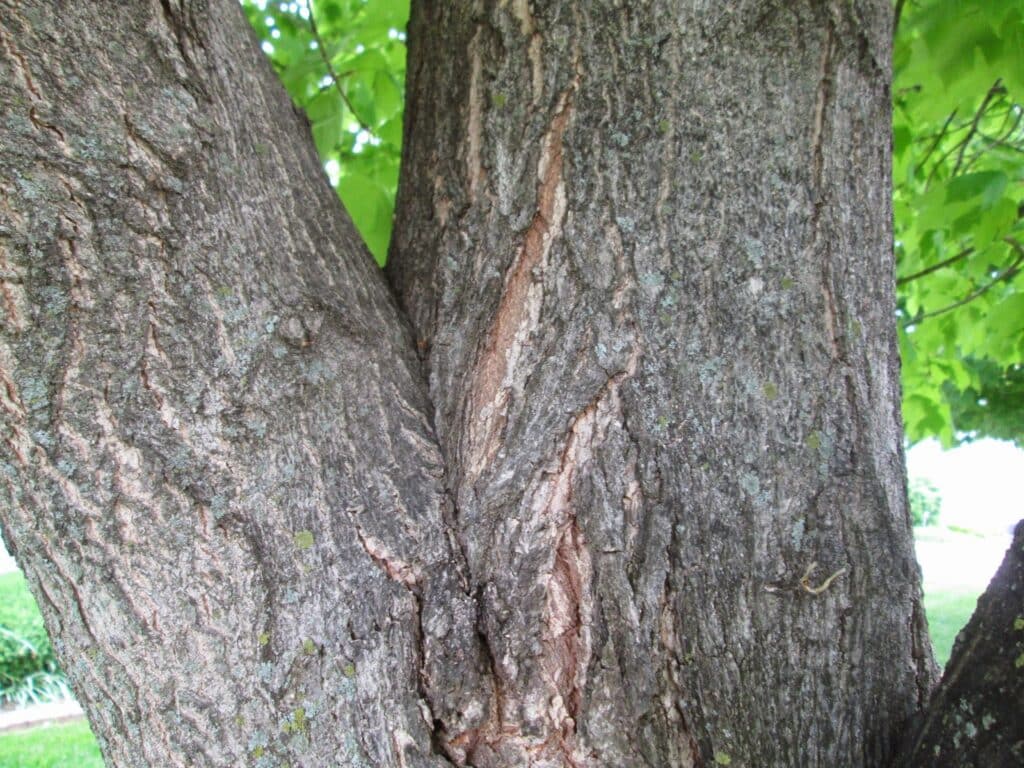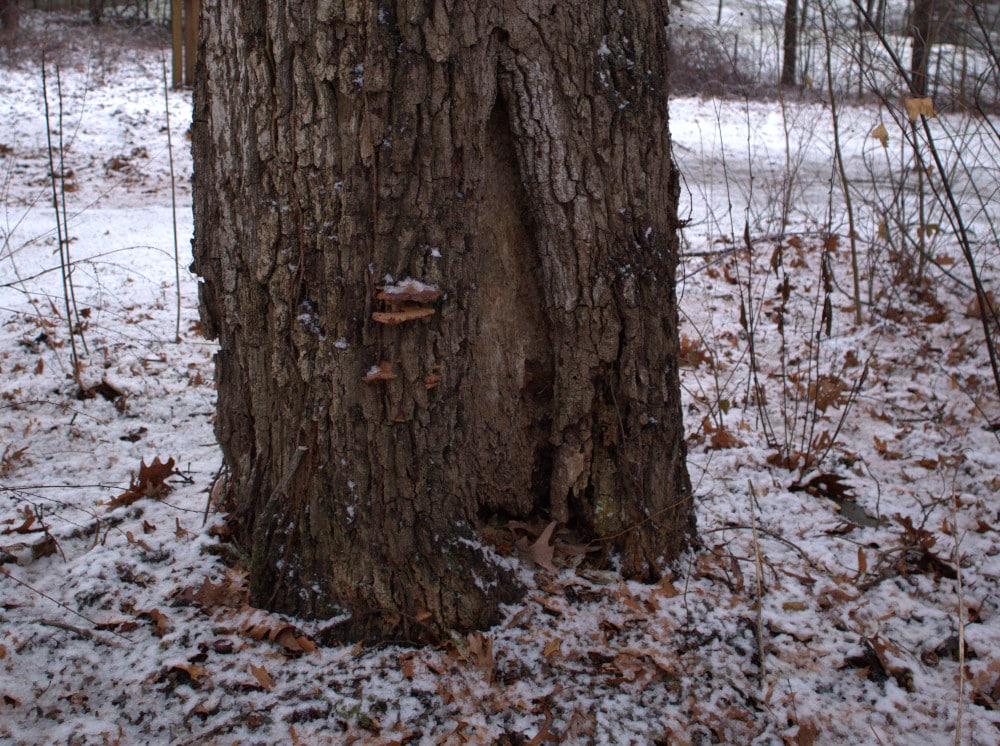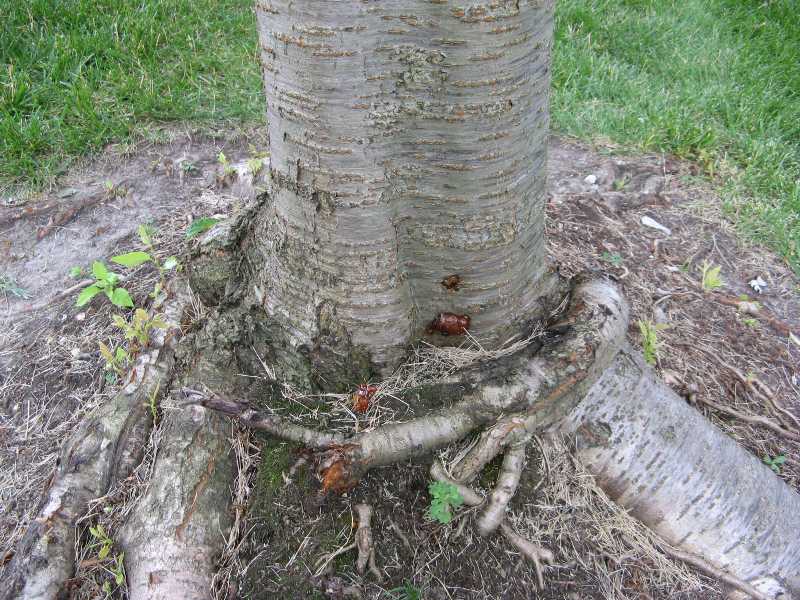Trees are wonderful, they provide shade to help with the summer heat, they provide oxygen for the environment, they make our landscapes beautiful and even after they are taken down, they continue to provide value as mulch, furniture, or any number of another products we can create with them. Unfortunately though, we sometimes have to remove them due to natural defects or risks presented in the urban environment. While we won't cover all defects in this post, we will go over a few of the common ones we see around Moore County.
Included bark or a co-dominant stem is a significant defect that can present major risks to homes and structures. Of course like most things, there are varying degrees that make this something that needs to be assessed by a professional in most cases. Sometimes we can add cabling to support, sometimes we can remove questionable limbs for weight reduction, and other times we recommend total removal. The important thing to look for is large bulges in branch unions (see the photo below). These unions are comprised of bark against bark, and not a proper wood fiber connection as we see in other unions. These are very weak and are prone to breaking in storms or when wet/icy.

Pitch Canker is a type of disease that affects pine trees, and is very common in the Pines. Whether or not it is a major risk is situation dependent. Small cankers can be a non-issue and are something that a tree can recover from and continue to grow healthy. In other cases however, the infection causes major defects or weaknesses in the tree, compromising the structural integrity of the tree. Then following photo shows a very large canker in a 70ft tall Loblolly pine in Southern Pines where the canker is located on 6ft off the ground! It is amazing that the tree still supports itself with a this amount of defective wood, the reality though is that this tree will likely fail at this point eventually causing major damage to homes and/or other structures.

Heart rot is exactly what it sounds like, this occurs when the center of the tree begins to rot. Frequently this is seen at the base of a tree, in or between roots. This occurs when fungus enters the tree through wounds caused by improper pruning cuts, damage to the base, fire damage or any cause of damage to healthy wood tissue. This creates a structural defect in the tree which severely weakens it making it a risk to people and structures nearby. Look for mushrooms growing around the base of the tree and cavities or hollows around or near the base. Unfortunately at times, there is no external evidence that suggest there is heart rot.
This photo shows a white oak with heart rot in the center and mushrooms growing on the bark

One very common problem when tree roots are buried to deep is called girdling roots. Like us, tree roots need oxygen to breathe and grow properly. When roots have the oxygen they need and grow in a healthy pattern, the tree can support itself, has a healthy canopy and is unrestricted. However when the root system is buried or constrained, they begin to grow toward oxygen, usually this means upward. Doing so allows the tree get the nutrients it needs, but once the roots reach the surface, they basically choose a random pattern, and often times they begin to grow around the trunk of the tree. All of this happens while the trunk continues to expand and eventually, you have roots that are constraining the flow of nutrients in the outer most layer of the tree, known as the cambium.
The following image shows a cherry tree that had mulch piled high around the trunk, and over time the roots grew around and began to choke the tree.

There are a few things to watch out for and change if you suspect you have a tree with girdling roots or you just want to do preventative maintenance.